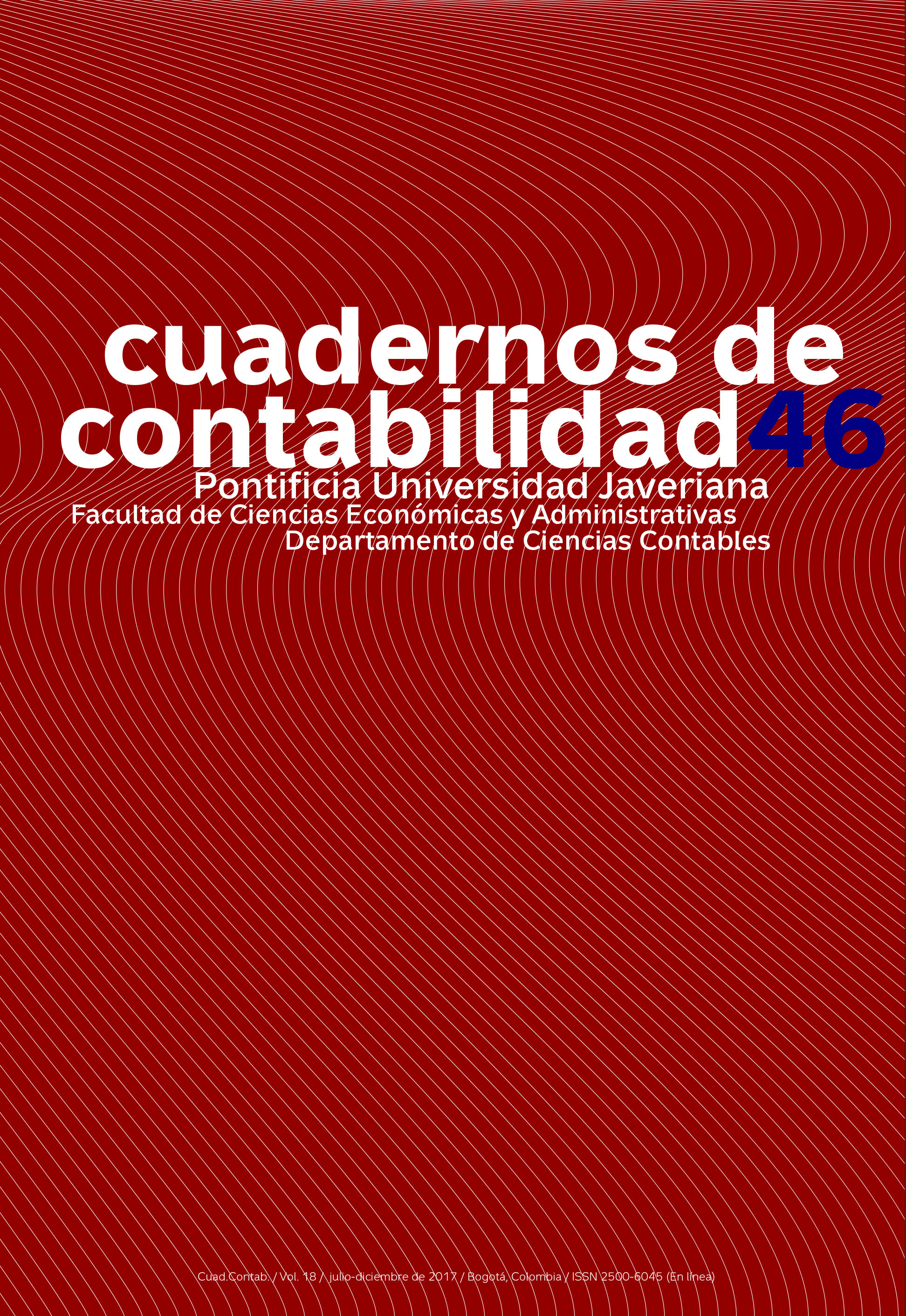Resumen
Al ser un aspecto que se aplica a múltiples procesos, el control ha sido denominado de diferentes maneras: control de gestión, financiero, administrativo, de calidad, de producción o interno. En la actualidad, los directivos se enfrentan a la difícil tarea de entender su funcionamiento, una labor notable por su complejidad, pues es efectuada en primer lugar por la dirección y el resto del personal. El objetivo de este artículo es realizar una inferencia estadística de las variables del control interno en una entidad hospitalaria, con información derivada de la percepción de sus actores. Con ese propósito, se desarrolló un instrumento de veintiséis ítems que abarcan los cinco componentes del control interno. En concordancia, se recurrió a unas de las ciencias pertinentes para el análisis de inferencias: la estadística multivariada, la cual es representada por el análisis factorial y el clúster. Como resultado, se obtienen los componentes según la debilidad de las variables, que son medidas de acuerdo con la percepción de los actores, su validez y su fiabilidad. Además, esta proporciona una estrategia a los directivos de la entidad hospitalaria que es objeto de estudio, de acuerdo con el diagnóstico de las variables del control interno.
Dominguez Lara, S. (2016). Inventario de la ansiedad ante exámenes-estado: análisis preliminar de validez y confiabilidad en estudiantes de psicología. Liberabit, 22(2), 219-228. Recuperado de http://www.scielo.org.pe/scielo.php?script=sci_arttext&pid=S1729-48272016000200009&lng=es&nrm=iso
Fumero Hernández, A., Marrero Quevedo, R. J., de las Cuevas Castresana, C. y Peñate Castro, W. (2016). Depressive patients’ preferences in shared decision-making. Acta Colombiana de Psicología, 19(1), 260-269. https://dx.doi.org/10.14718/ACP.2016.19.1.11
Gogni, V. y Muiños, R. (2016). Aplicación de un modelo factorial confirmatorio para encontrar los factores latentes que determinan la calidad de vida percibida. Revista de Matemática Teoría y Aplicaciones, 23(2), 463-473. Recuperado de http://www.scielo.sa.cr/scielo.php?script=sci_arttext&pid=S1409-24332016000200463&lng=en&tlng=es
Gutiérrez-Ruiz, R. L. y Católico-Segura, D. F. (2015). E-control en las entidades de la rama ejecutiva del orden nacional en Colombia. Cuadernos de Contabilidad, 16(spe42), 553-578. https://dx.doi.org/10.n144/Javeriana.cc16-42.eere
Hernández Vargas, C. I., Llorens Gumbau, S., Rodríguez Sánchez, A. M. y Dickinson Bannack, M. E. (2016). Validación de la escala UWES-9 en profesionales de la salud en México. Pensamiento Psicológico, 14(2), 89-100. https://dx.doi.org/10.11144/Javerianacali.PPSI14-2.veup
Morais, L. S. y Teixeira, M. G. C. (2016). Interfaces da accountability na administração pública brasileira: análise de uma experiência da auditoria geral do estado do Rio de Janeiro. REAd. Revista Eletrônica de Administração (Porto Alegre), 22(1), 77-105. https://dx.doi.org/10.1590/1413-2311.014162016.62768
Moreira, C. N. O., Marques, C. B., Salomé, G. M., Cunha, D. R. y Pinheiro, F. A. M. (2016). Health locus of control, spirituality and hope for healing in individuals with intestinal stoma. Journal of Coloproctology (Rio de Janeiro), 36(4), 208-215. https://dx.doi.org/10.1016/j.jcol.2016.04.013
Mujica, V., Linares, C. F. y Velásquez, I. (2017). Estudio estadístico de la incidencia de ciertas variables de síntesis sobre la cristalinidad y otras propiedades de hidrotalcitas Ni, Fe. Ingeniare. Revista chilena de ingeniería, 25(1), 85-94. https://dx.doi.org/10.4067/S0718-33052017000100085
Patias, T. Z., Bobsin, D., Gomes, C. M., Liszbinski, B. B. y Damke, L. I. (2016). Family agro-industry clusters from the social innovation perspective. RAM. Revista de Administração Mackenzie, 17(6), 191-215. https://dx.doi.org/10.1590/1678-69712016/administracao.v17n6p191-215
Rojas-Torres, L. (2016). Simplificación del gradiente de la función de máxima verosimilitud del análisis factorial confirmatorio. Revista de Matemática: Teoría y Aplicaciones, 23(2), 475-488. Recuperado de http://www.scielo.sa.cr/scielo.php?script=sci_arttext&pid=S1409-24332016000200475&lng=en&tlng=es
Stacciarini, T. S. G. y Pace, A. E. (2017). Confirmatory factor analysis of the Appraisal of Self-Care Agency Scale - Revised. Revista Latino-Americana de Enfermagem, 25(e2856 Epub January 30). https://dx.doi.org/10.1590/1518-8345.1378.2856
Valdés-Moreno, M. I., Rodríguez-Márquez, M. C., Cervantes-Navarrete, J. J., Camarena, B. y de Gortari, P. (2016). Traducción al español de la escala de adicción a los alimentos de Yale (Yale Food Addiction Scale) y su evaluación en una muestra de población mexicana. Análisis factorial. Salud mental, 39(6), 295-302. https://dx.doi.org/10.17711/SM.0185-3325.2016.034
El aval sobre la intervención de la obra (revisión, corrección de estilo, traducción, diagramación) y su posterior divulgación se otorga mediante una licencia de uso y no a través de una cesión de derechos, lo que representa que la revista y la Pontificia Universidad Javeriana se eximen de cualquier responsabilidad que se pueda derivar de una mala práctica ética por parte de los autores. En consecuencia de la protección brindada por la licencia de uso, la revista no se encuentra en la obligación de publicar retractaciones o modificar la información ya publicada, a no ser que la errata surja del proceso de gestión editorial. La publicación de contenidos en esta revista no representa regalías para los contribuyentes.



